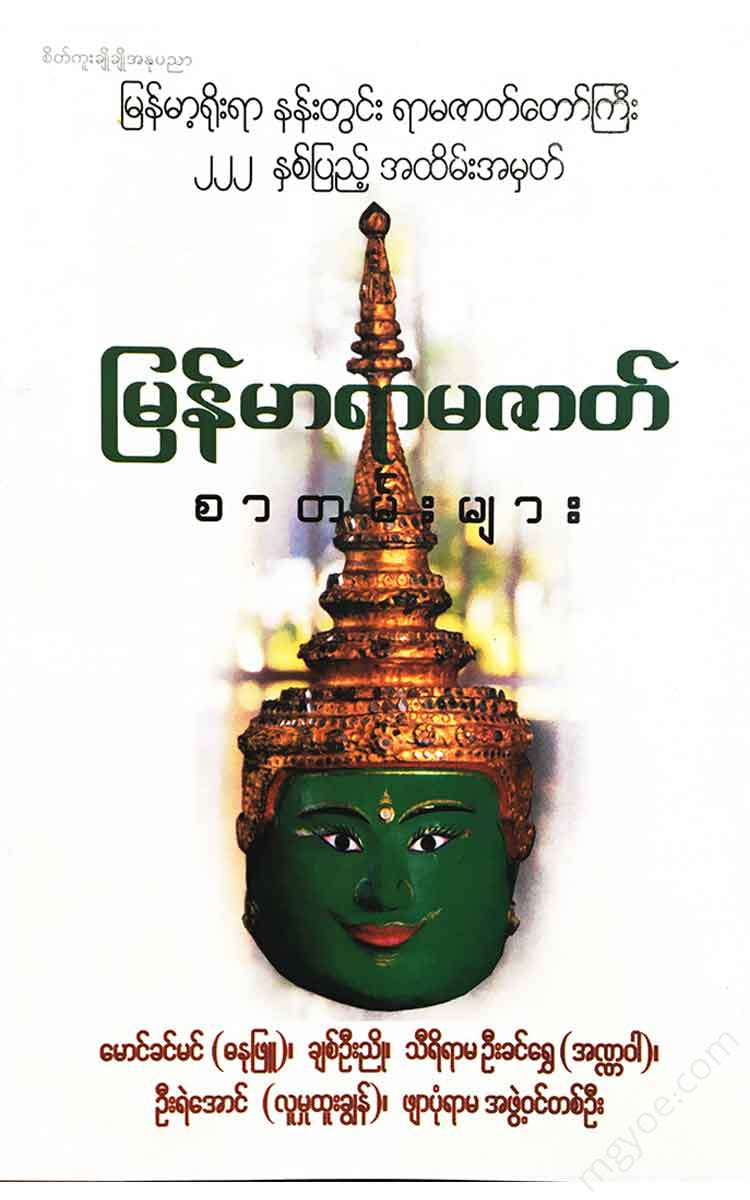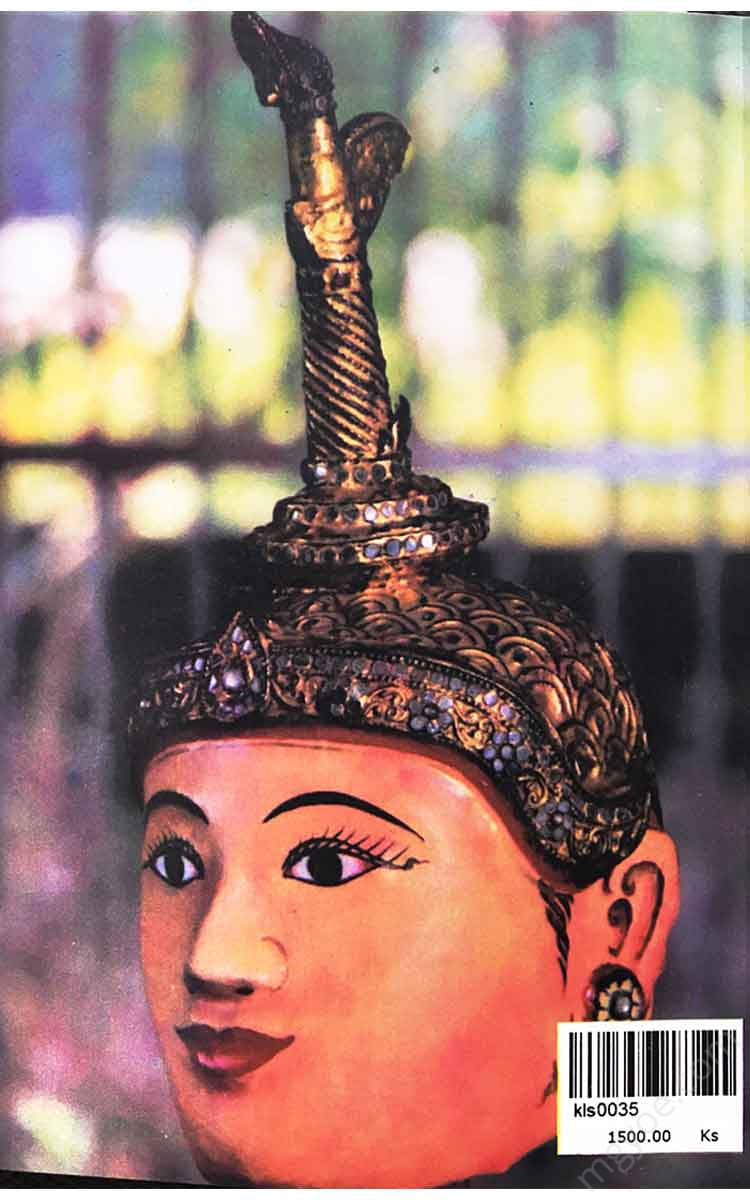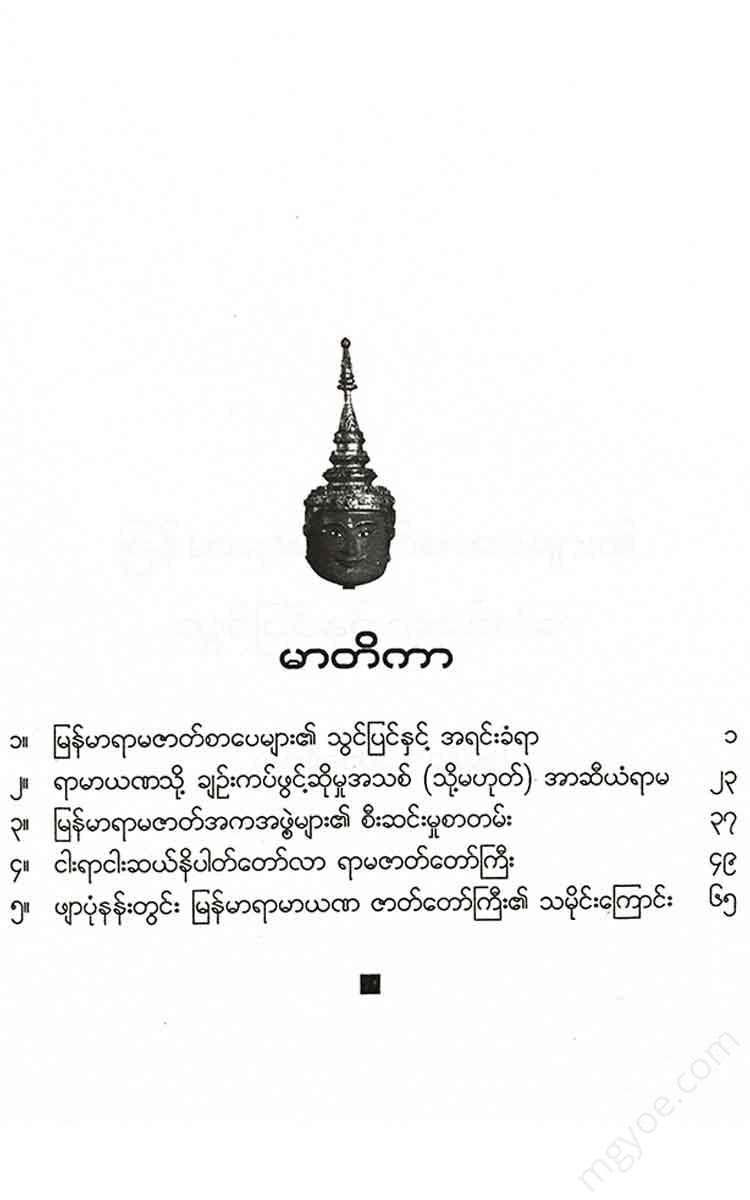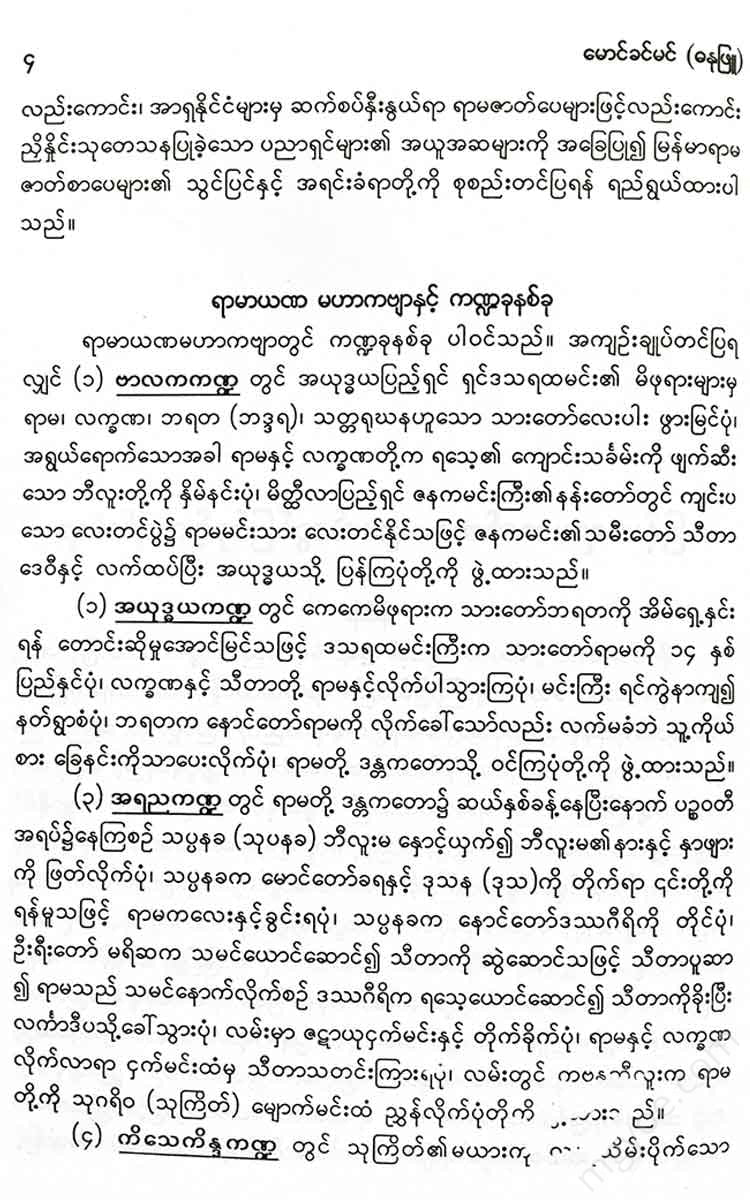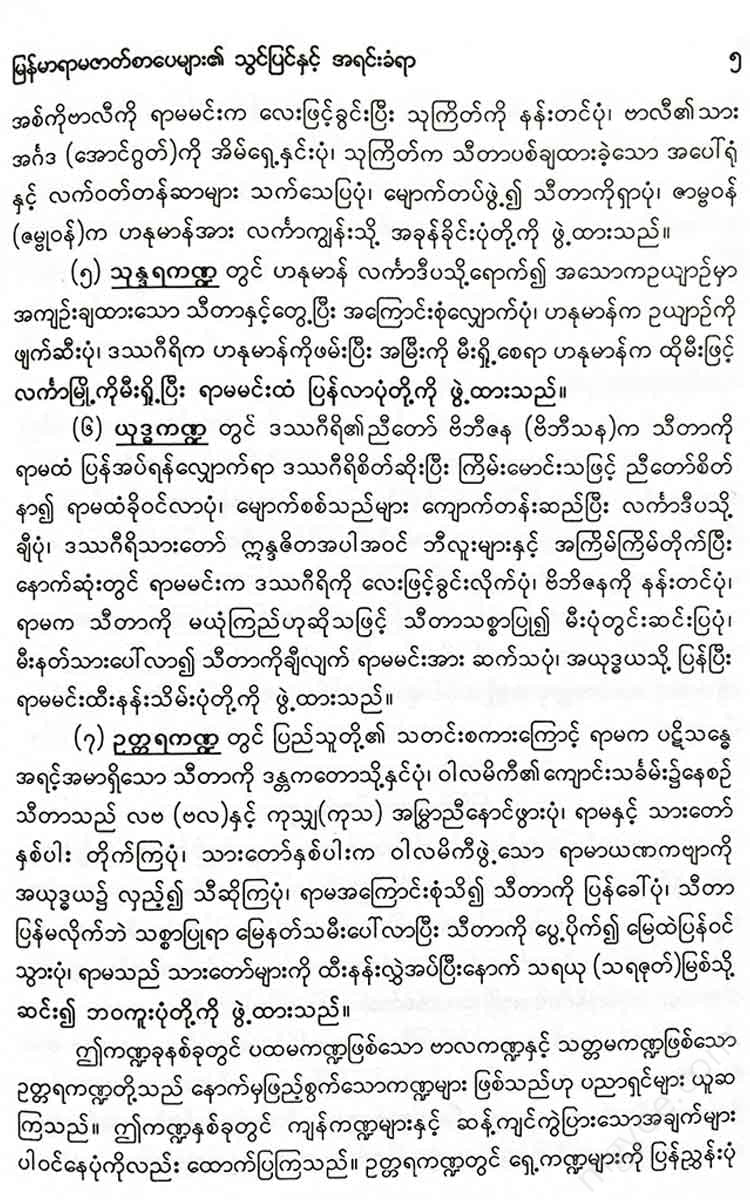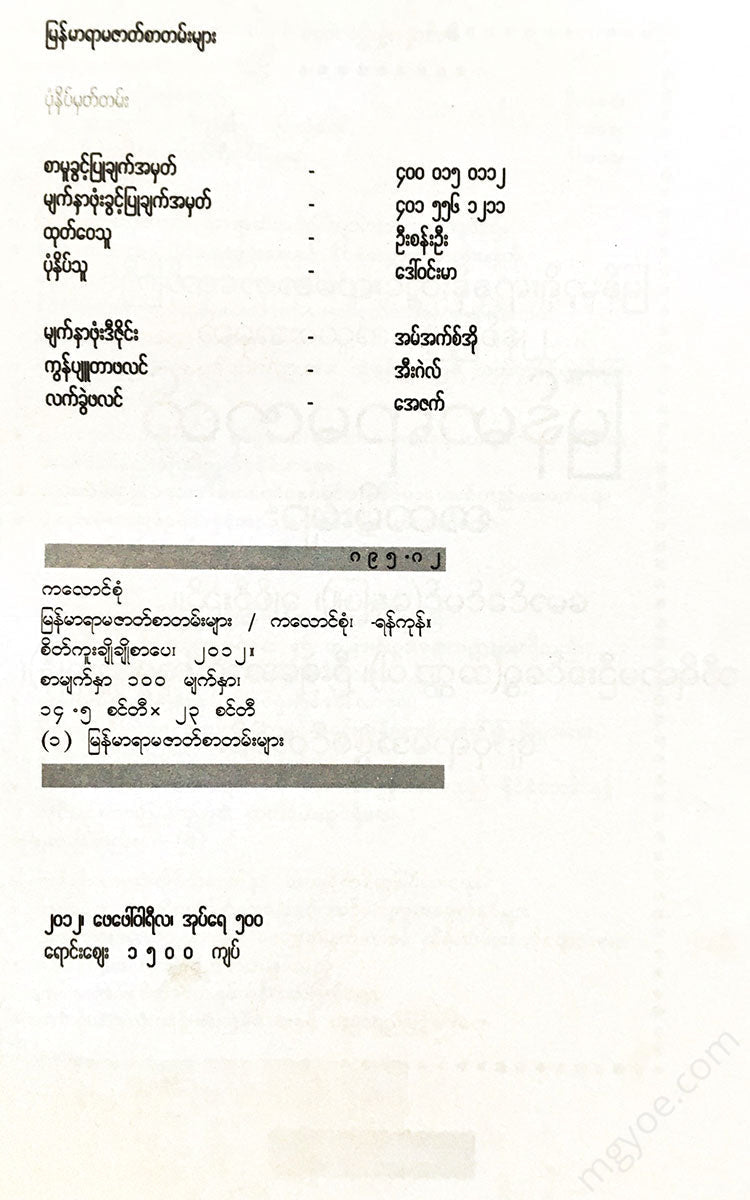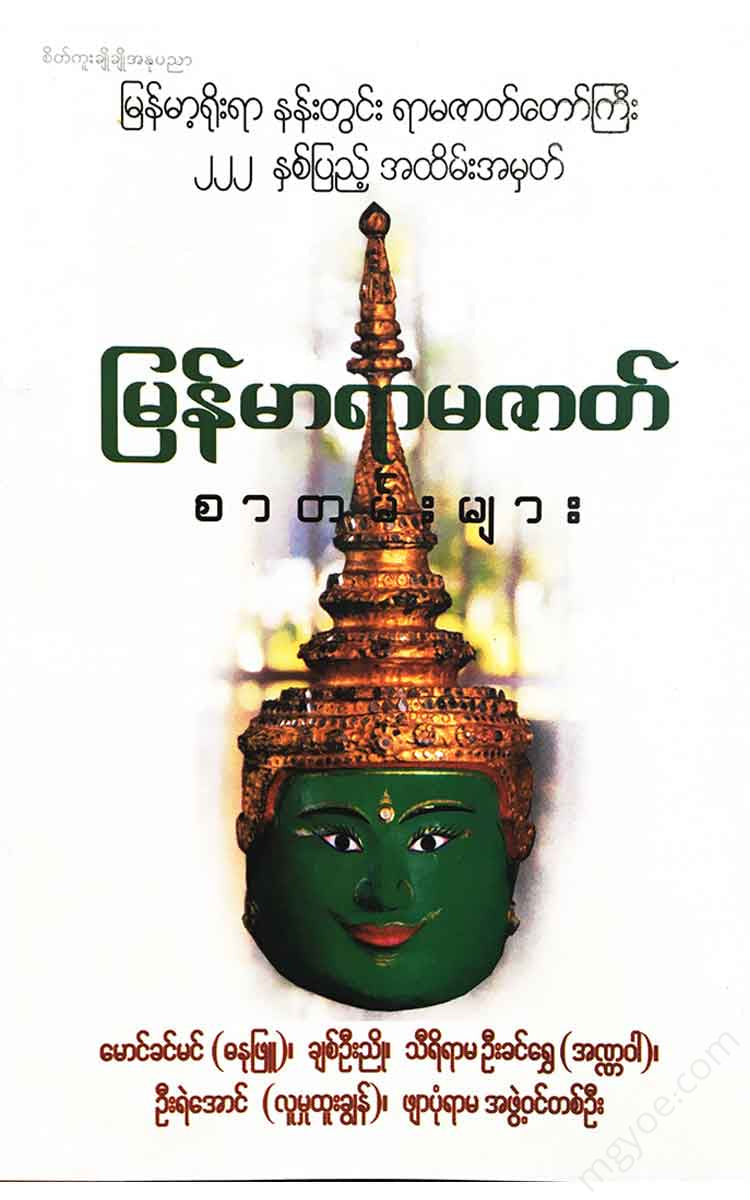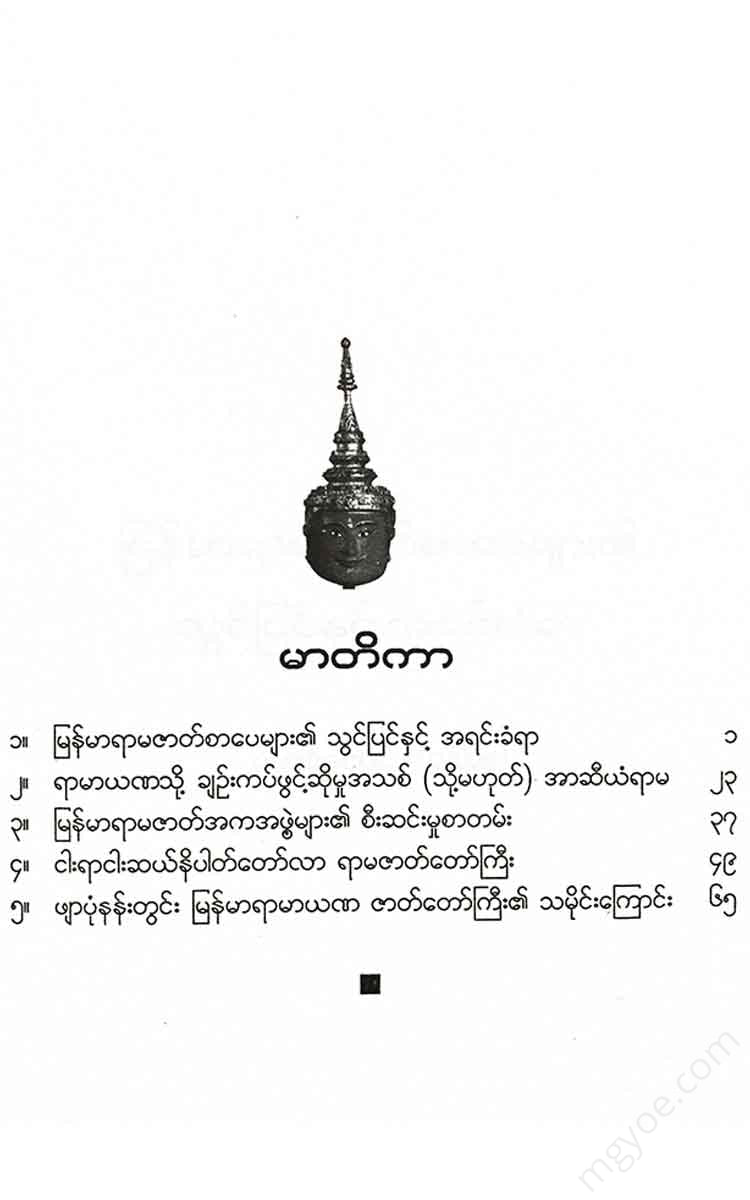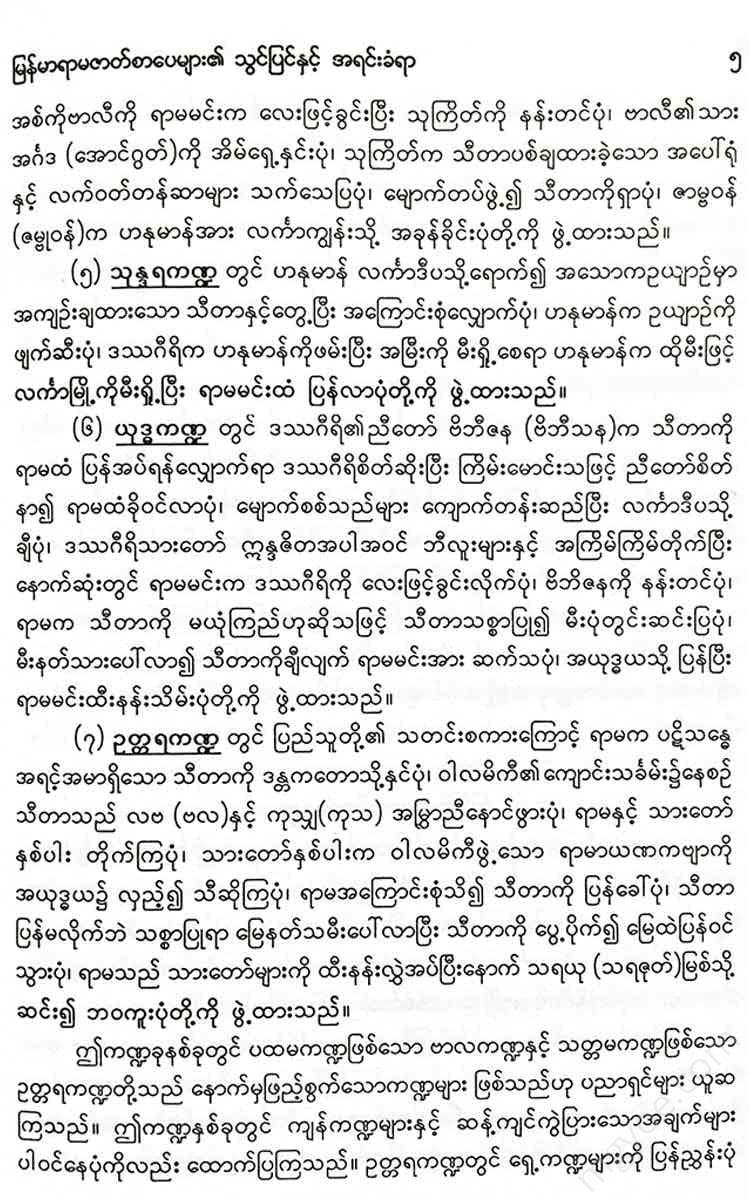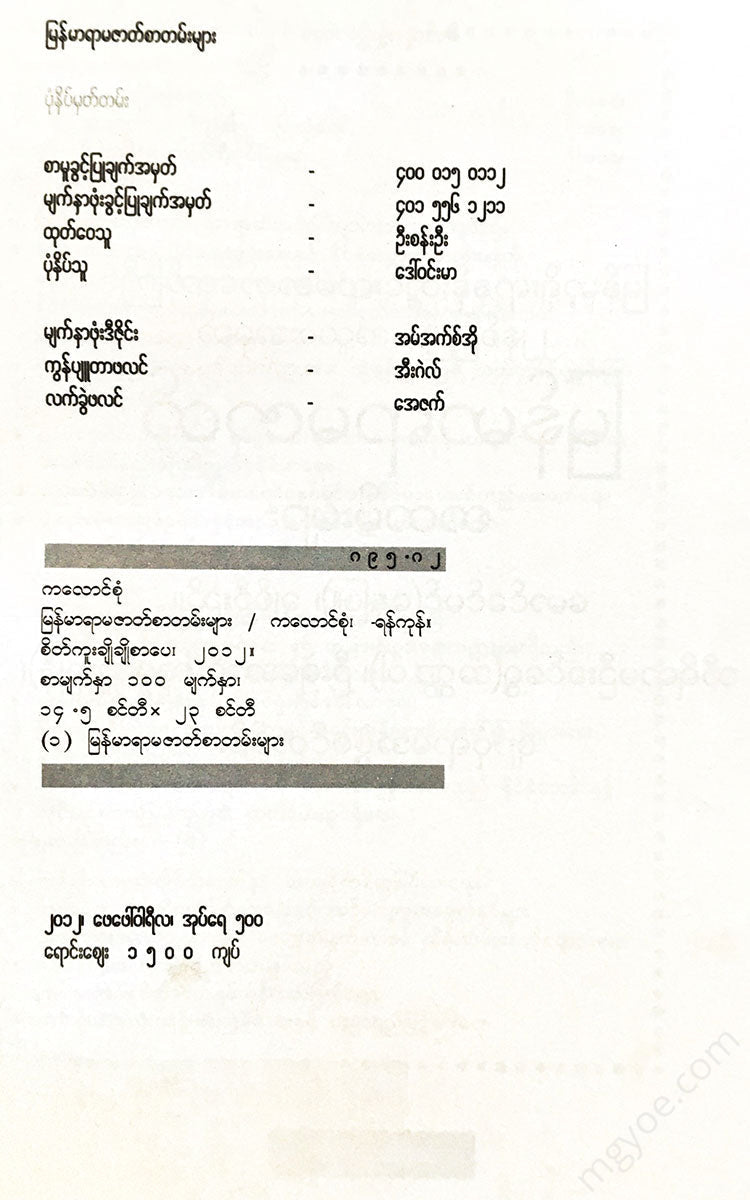စိတ်ကူးချိုချိုစာပေ
Collection of poems - Myanmar Ramayana texts
Collection of poems - Myanmar Ramayana texts
Couldn't load pickup availability
The nature and origins of Burmese Ramayana literature
It is known that there is a Myanmar Rama story that is earlier than the Ramasachin. It is said in the Ramasachin, “Thein Khoku, the monster is defeated, Rama and the king are victorious, the old story is old, the reason is clear, the meaning is clear, the beginning of the story is clear, the first story is not explained.” According to this, after Dasagiri was defeated by a bow, Rama and Sita reunited, and it is said that the old story already existed, so the beginning of the story is not explained. From this statement, it can be seen that there was a Myanmar Rama story before the Ramasachin.
In fact, there is evidence that the Myanmar Ramayana script may have existed since the 17th-18th centuries.
During the reign of Mahadhammarajadhipati (1095-1113/1733-1751) of the Nyaungyan era, the monk of Taungdwin Min Kyaung, who opened the letter of love to the Kanda Min Kyaung monastery during the Inva era, explained that “there is something that is external, but it is also something that is successful by observing the characteristics of a person and internalizing it.” He cited incidents from the Ramayana as examples. The incident where King Rama and the monkey warriors arrived in Ceylon and besieged the city; the incident where Vibhijana sent Sita back and advised him, but Vibhijana was expelled; the incident where Rama accepted Dhabi Jana who took refuge with King Rama after consulting with Sukkot; the incident where Rama was able to defeat Indrajita, the son of Dasagiri, on the advice of Vibhijana; and the incident where Hanuman was able to destroy Dasagiri’s sacrificial feast. The monk of Taungdwin Min Kyaung Monastery, despite being an outsider, concluded that it was beneficial if he could describe these events and use them in a meaningful way. “Based on these facts, the monk could understand the Ramayana and draw conclusions. If so, the story of Rama could be written down. Since he had the opportunity to read the writings thoughtfully, it can be said that the monk was able to think and draw conclusions,” says Saya Zawgyi. (Saya Zawgyi explains that the Burmese have known about Rama since the 11th century during the Bagan era and that there is a tradition of oral transmission of the story, as described in Ramayana in Burma (Myanmar) ososd:oza səcət:80869::èle: Cool .)
After the appearance of Ramasachin, Shwe Tai Soe U Toe’s Ramasakan (1146/1784) written during the reign of Bodaw Pagoda appeared. According to the description of U Toe in Ramasakan, other Ramasakan writers, such as Kelasarakan, Manaw Hari Ramasakan, and Maethi Ramasakan, it is believed that the Ramasakan existed before Ramasakan. The text has not been found. It only contains the chapter where Ramasakan meets Sukhat and Sukhat tells Rama that he saw Sukhat go to Dasagiri. The story does not end there. In general, it is the same as the story of Ramasachin. In Ramasakan, the Achi groups, personality groups, and Akan Akyaw groups are arranged in a circle according to the nature of Ramasakan, and the story is not detailed. The human behavior of Princess Sita is detailed.
After the emergence of Ramakan, it is known that the Ramayana Jataka (1151/1789) was written by the crown prince during the reign of Bodaw Pagoda. The legendary Jatakas of the Ayutthaya Kingdom, the Yunya Kingdom of Haripur, were translated into Burmese in consultation with the Jumsangkorn and Yunsangkorn, and the stories that were completely completed were selected and the stories that were suitable for the palaces were written according to the plot of the story, and the roles of the poets and dramatists were divided according to the plot so that they could be sung and danced. According to the inscription of Prince Linpin, it is stated that the plays Enaung, Rama, Sanpatta, and Kesathiri were written. The composers of the music and the stories were the Pabhavadi-bukto Thakin Min Mi, Po Prince, Mahanandayodha U Kyi Soe, and Myawaddy Mingyi U Sa. The writers of the story and the story-telling were Min Ye Nanda Meik, the Duke of Malun, Nay Myo Kyaw Swar, the assistant to the Duke of Moeta, Shwe Tai Soe U Toe, and Tha Toe Dhamma Raja, the Duke of Taungoo. It is known that these eight scholars wrote the Ramayana. The text has not been found yet.
“The Myat Mingyin translated the Kale Rama novel (1162/1800) from the Kyakula language and was written by U Bi, the author of the Kala Rama novel. It contains completely different elements from the Rama Sa Chin. For example, the absence of Dasagiri in the bow and arrow competition, and U Ritaw Maritham pretending to be a golden deer. The text has not been found.
Two prose versions of the Ramayana are also found. One is the manuscript preserved by the Trustees of the Kyaik Waing Pagoda of the Sayadaw U Indaka Monastery in Yangon. It is also called the Ramayana. This manuscript was published by the University Book Publishing Committee as a series of volumes in 1974. The other is the Maharamayana, a manuscript copied from the manuscript by U Taek Htut in London and edited by U Maung Maung Gyi, a professor of Burmese literature. It was published by the Myanmar Research Association in 1971. Saya U Thein Han (Zaw Gyi) refers to the Ramayana as the old manuscript and the Maharamayana as the new manuscript. In the Maharama novel, the author states that the Rama story that he had written in the past “does not show the meaning of the story, but the story is not clear. The story is also honest. In this way, by making the meaning of the story clear and distinct, and by arranging and inserting words that are pleasing to the ear, and by adding words that are beautiful, we will create a new and joyful Rama story.”